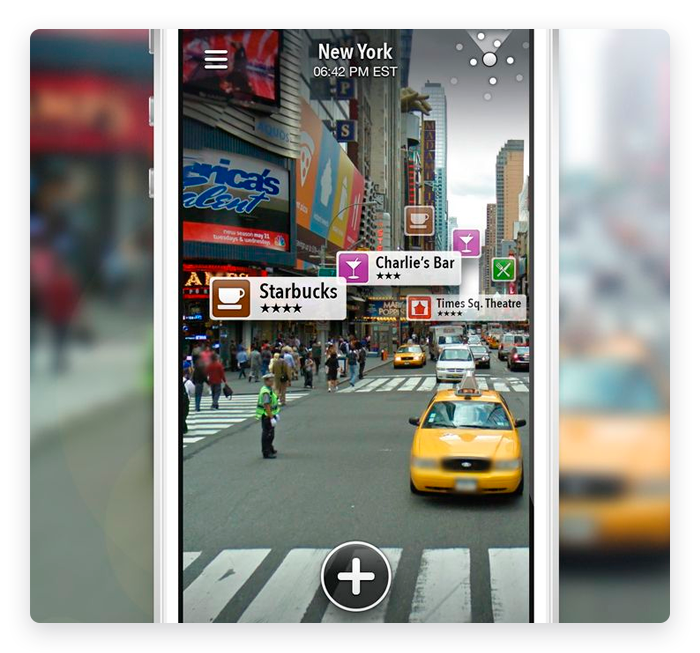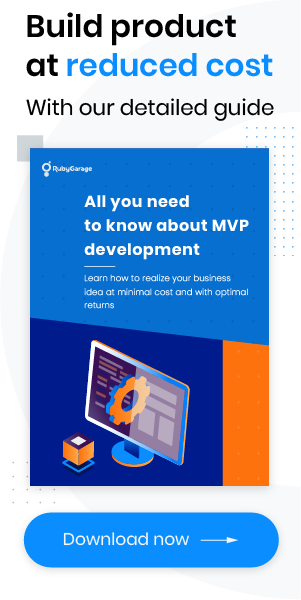-
Product Management
Software Testing
Technology Consulting
-
Multi-Vendor Marketplace
Online StoreCreate an online store with unique design and features at minimal cost using our MarketAge solutionCustom MarketplaceGet a unique, scalable, and cost-effective online marketplace with minimum time to marketTelemedicine SoftwareGet a cost-efficient, HIPAA-compliant telemedicine solution tailored to your facility's requirementsChat AppGet a customizable chat solution to connect users across multiple apps and platformsCustom Booking SystemImprove your business operations and expand to new markets with our appointment booking solutionVideo ConferencingAdjust our video conferencing solution for your business needsFor EnterpriseScale, automate, and improve business processes in your enterprise with our custom software solutionsFor StartupsTurn your startup ideas into viable, value-driven, and commercially successful software solutions -
-
- Case Studies
- Blog
How Augmented Reality Makes Advertising Interactive
Augmented reality (AR) has already become a buzzword in the world of technology. It’s difficult to find someone who’s never heard of Pokémon GO, a bestselling AR mobile game played by millions of people all over the world.
However, AR isn’t just about games. It goes far beyond gaming and entertainment. AR has breathtaking prospects in many industries, from education to healthcare to construction. Now AR has come to advertising, and it’s going to change the way the digital advertising market functions.
AR makes advertising interactive, allowing marketers and advertisers to reach out to consumers in totally new ways. Many companies have already embraced this cutting-edge technology. If you still aren’t sure whether it’s worth going for, you should clearly realize what benefits augmented reality advertising provides and how exactly you can use this technology in real life.
Reasons to Adopt Augmented Reality in Advertising
The modern world is a digital world: according to a report by We Are Social, there are almost 4.5 billion active internet users globally. There’s plenty of work for advertisers and marketers. No wonder the digital advertising market is booming: worldwide spending on digital ads is expected to grow from 283 billion in 2018 to $517 billion by 2023.

And though augmented reality ads have been used mostly by early adopters so far, they’ll become more popular soon as the number of AR users rises. Statista forecasts that AR market size worldwide will increase from roughly 3.5 billion in 2017 to more than 198 billion in 2025.
There are several major reasons why the future of advertising belongs to AR ads; let’s go over them.
Reason #1: Emotional Connection
Augmented reality ads are immersive, which means they help marketers create a certain emotional connection with customers. Unlike images or banners, for example, AR ads are interactive and lifelike: consumers can see and even interact with them.
Imagine, for instance, an eye-catching billboard advertising a just-released movie. Now think of the magic AR can do: passers-by point their smartphone cameras at the billboard and watch the trailer on their smartphone screens. Which of these two strategies (a billboard or an AR ad) is likely to incite more interest? No doubt, most customers will opt for an AR ad.
Interacting with AR ads, consumers feel like they’re playing an engaging video game. This builds an emotional connection with customers, encouraging them to make purchases. Needless to say, an emotional connection is a great tool for increasing brand awareness. People better recall brands they have positive associations with, so AR ads are perfect not only for promoting sales, but also for building a company’s reputation.
This strategy was used in the Arctic Home Campaign by Coca-Cola and the World Wide Fund. The campaign, aimed at the protection of polar bears and their natural habitat, included an augmented reality event at the Science Museum in London. Visitors could see themselves interacting with virtual animals in their natural environment. This event helped the Coca-Cola company create deep emotional connections between people and the brand.
Reason #2: Money-Saving Advertising
Though digital ads are extremely popular, traditional print ads are still far from obsolete. There are many print magazines with catchy images advertising a whole spectrum of goods and services. However, placing ads in popular print magazines can be rather expensive.
Augmented reality advertising is usually more affordable and far more immersive than print advertising. Of course, the price for an AR ad varies depending on its quality: a simple AR ad can cost around $5,000 to develop, while a sophisticated AR campaign with eye-catching graphics may amount to $100,000.
There are two major types of augmented reality: marker-based and location-based. AR ads can be built with the help of either of them.
- Marker-based AR ads require a marker (i.e. a target image) that customers scan with their smartphone cameras to bring virtual content to life.
- Location-based AR ads don’t require any markers (so there’s no need for a print image), as they overlay virtual content based on a user’s location (with the help of GPS).
Launching an AR advertising campaign is usually a lot cheaper than placing a print ad in a bestselling print magazine. Moreover, the same AR application can be used for many campaigns.
Reason #3: Boosting Sales
Augmented reality ads aren’t the only way of promoting products or services. AR offers other ways for marketers and advertisers to increase sales volumes: virtual try-ons.
Imagine coming across a conventional advertisement for, say, sunglasses. You see nice pictures of the glasses, but can you be sure they’ll suit you? This isn’t a problem if augmented reality technology is used: you’ll be able to virtually try on a number of glasses and choose the ones you like the most.
Needless to say, consumers can try on many other items with AR: shoes, clothing, jewelry, watches, and more. This makes AR ads a powerful tool for driving sales and increasing revenue.

Reason #4: Improving Hyperlocal Advertising
Digital ads use advanced machine learning algorithms to analyze user behavior and interests in order to recommend the right products and services to the right people. Augmented reality ads offer marketers an even better opportunity: advanced hyperlocal advertising.
Unlike traditional hyperlocal ads that, for example, tell customers about establishments such as cafes and outlets, AR hyperlocal ads are truly immersive as they can show objects right on a smartphone’s screen. This way, customers are not only informed about places that might be interesting to them, but are guided there as well.
AR ads are, therefore, extremely useful for business owners and can help them attract more customers.

Augmented Reality in Advertising: Use Cases
Augmented reality ads haven’t become common yet as AR technology is just making its first steps and only early adopters have started using it. However, any new technology requires time to become mature and widespread.
We’ve selected five use cases for augmented reality advertising so that you can understand what unique experiences AR provides.
#1: IKEA AR Advertising Campaign
IKEA, the famous furniture retailer, was one of the early adopters of augmented reality ads back in 2013 when it released its iOS AR mobile app that showed users virtual pieces of furniture from the company’s 2014 catalog.
Customers simply put a print furniture catalog on the floor and scanned it with their smartphone or tablet cameras to see the virtual furniture. This way, customers could see whether a certain piece of furniture would fit in their real-life environments and what color would be most suitable. AR allowed the company to spark customers’ interest and encourage sales.
IKEA is currently building a new AR app based on Apple’s ARKit software.
#2: Pepsi Bus Shelter AR Ad
Bus shelters are often used for advertising, but augmented reality can turn a common bus shelter poster into an unforgettable and entertaining experience. That’s what Pepsi did with its Pepsi Max AR advertising campaign.
A screen and a camera were installed in typical London bus shelters to overlay virtual objects onto a real-life camera view.
Similar technology can be used to advertise anything from a fizzy drink to a new movie.
#3: Toys ”R” Us Campaign for Children
Brick-and-mortar stores are struggling to compete with online marketplaces today. Augmented reality can help them remain afloat thanks to the breathtaking immersive experiences it can provide.
Toys ”R” Us launched a fantastic AR advertising campaign dedicated to the Easter holiday. It was called Virtual Easter Egg Hunt, and children were invited to use their tablets to follow virtual Easter bunnies and hunt for eggs. The eggs’ coupons were for real toys in the store.
AR helped Toys “R” Us create a truly amazing advertising campaign that attracted lots of visitors.
#4: Lacoste Virtual Try-Ons
In 2014, Lacoste launched an augmented reality app for its LCST brand. Users could place their feet on a special marker, scan it with their smartphones, and try on different Lacoste shoes.
This type of AR application is extremely useful for online marketplaces, as people can try apparel before purchasing, minimizing the number of returns.
#5: Net-A-Porter Storefront AR Campaign
Storefronts belong to traditional advertising, but you can add some digital experience to them with the help of augmented reality. Storefronts can contain markers for AR apps that passers-by can scan to enjoy outstanding AR experiences. This kind of advertising isn’t just efficient, but affordable as well, since companies can use their own storefronts for advertising campaigns.
That’s what Net-A-Porter did when it created augmented reality storefronts at its outlets in London, Paris, Munich, New York, and Sydney. Customers could install a special mobile AR application on their portable devices, scan the storefronts, and enjoy AR experiences (360-degree views, product information, pricing, etc).
Challenges in the Path of Augmented Reality Advertising
Though AR can substantially change the advertising industry, there are several challenges in the path of this technology. Let’s briefly mention the most significant.
Challenge #1: Need for a Mobile Application
So far, augmented reality works mostly through special AR mobile applications. And that’s the problem: to immerse themselves in the world of AR, customers need to find a mobile app in the Apple App Store or the Google Play Store and install it. Doing so takes time and, moreover, most people would probably need to keep several AR apps on their smartphones to access different AR experiences. As a result, many users don’t want to bother with it and prefer not to use AR apps at all.
The solution to this problem is under way, though. Blippar, a prominent AR provider, is working on a totally new media format called augmented reality digital placement (ARDP). ARDP doesn’t require a separate AR application. Instead, advertisers can use ARDP to create AR ads by using only smartphone or desktop cameras. Thanks to ARDP, users can tap on a rich media ad (a banner, for example) and activate AR.
This technology is going to make AR ads more accessible and, thus, more widespread.
Challenge #2: Hardware Limitations
Would you prefer to play a computer game with realistic graphics or one with poor graphics? Unless you’re a fan of old-school games, you’ll opt for the better graphics. The same applies to augmented reality.
People are unlikely to enjoy an AR app with poor graphics, but smartphones and smart glasses are no match for desktops in terms of graphics power. Portable devices need to have hardware powerful enough to produce high-quality graphics.
Fortunately, the processing power of portable devices has been steadily increasing, and modern smartphones can produce quite sophisticated AR.
Challenge #3: Development Process
If you realize the full potential of AR advertising, you’re probably wondering how exactly you can create augmented reality ads.
First of all, you can use a special AR software development kit (SDK). Many companies are offering these tools, so choosing the right one isn’t easy. You need to figure out what functions you need from an SDK in order to create your AR application. We recommend reading a helpful comparison of the most popular AR SDKs on the market to get a general understanding of what you’re dealing with.
However, using an AR toolkit requires strong coding skills. Many digital advertising agencies simply don’t have the in-house developers to do it. So instead of reinventing the bike, you can cooperate with a reliable technology partner that will provide you with a team of professional software developers. They’ll analyze your project and define what AR SDK is the most suitable and how much effort your project requires.
High Time to Jump on the AR Advertising Bandwagon
Augmented reality advertising gives marketers an enormous advantage, since this technology makes ads engaging, interactive, and efficient. As you can see, many companies have already embraced this top-notch technology and more are expected to follow suit.
If you are ready to step into the world of augmented reality advertising, feel free to contact our team and we’ll help you get your fantastic idea off the ground.












